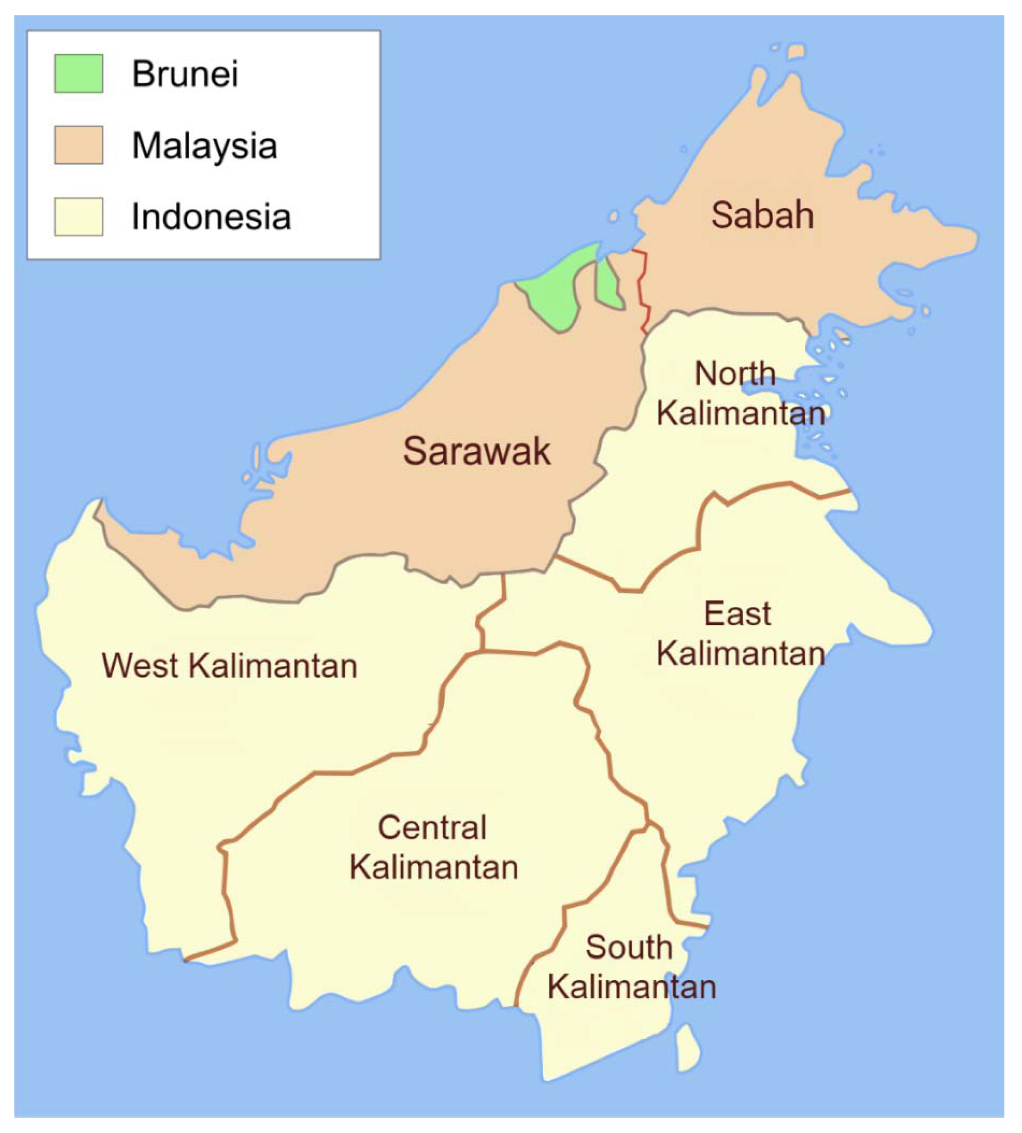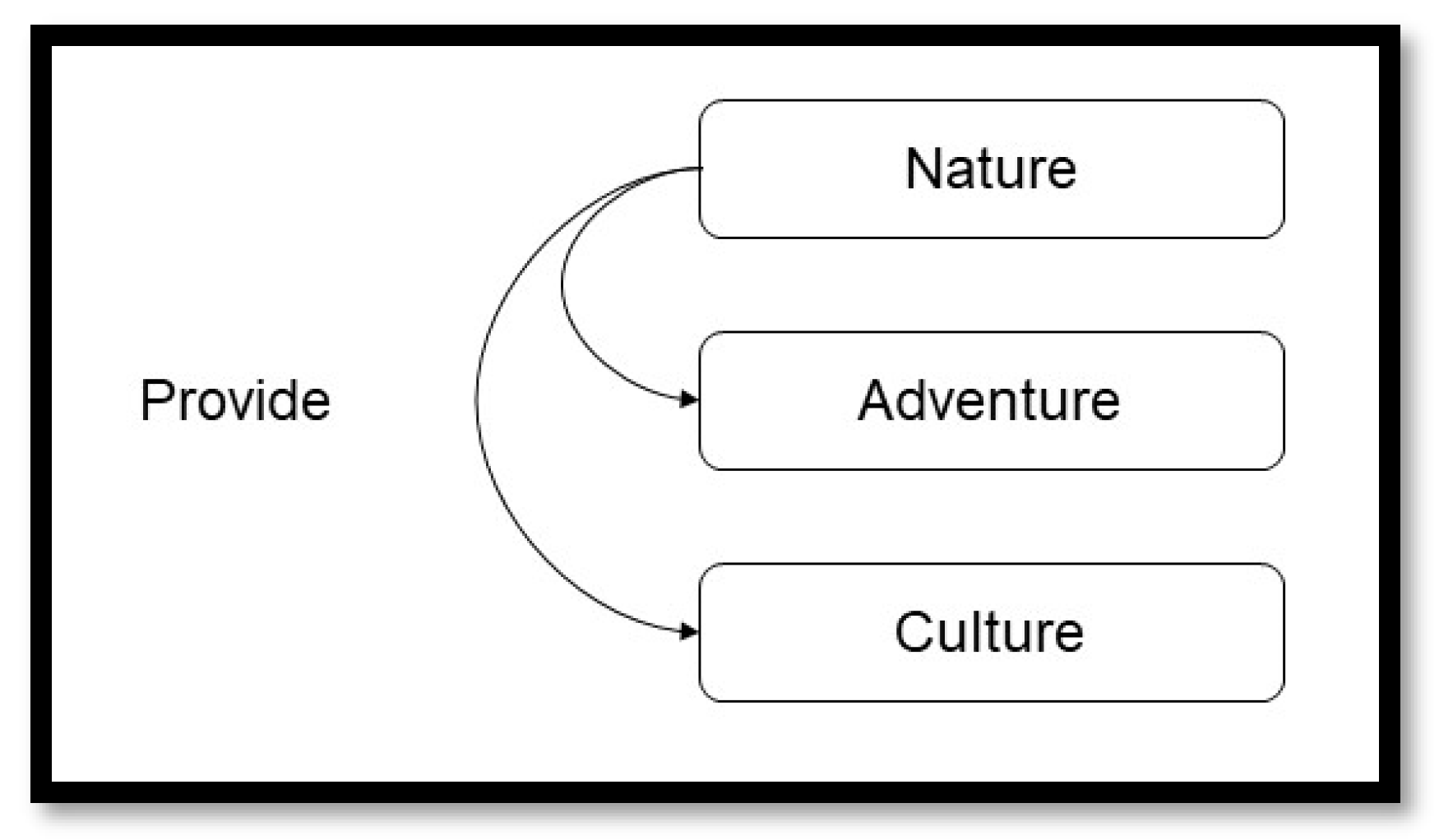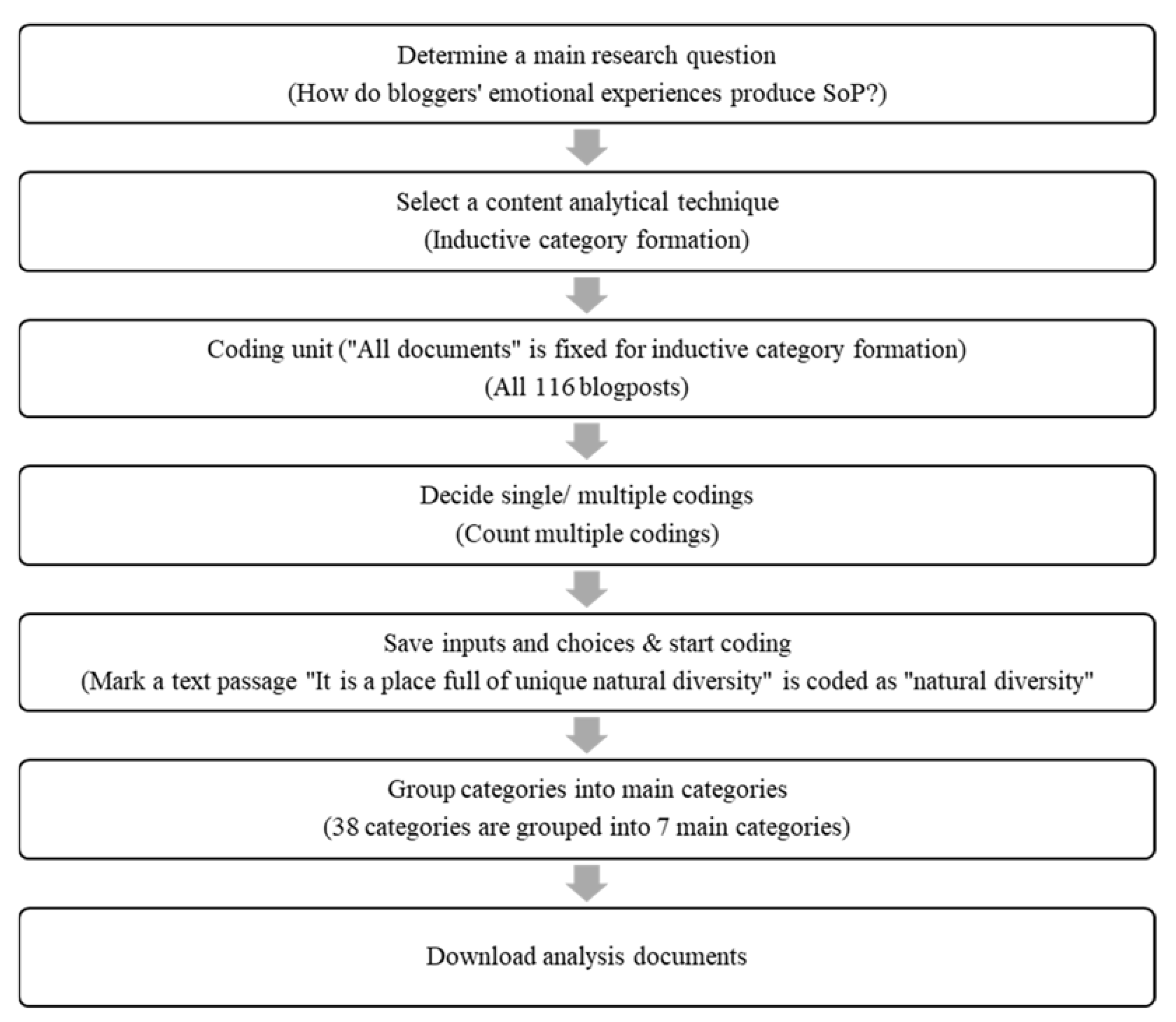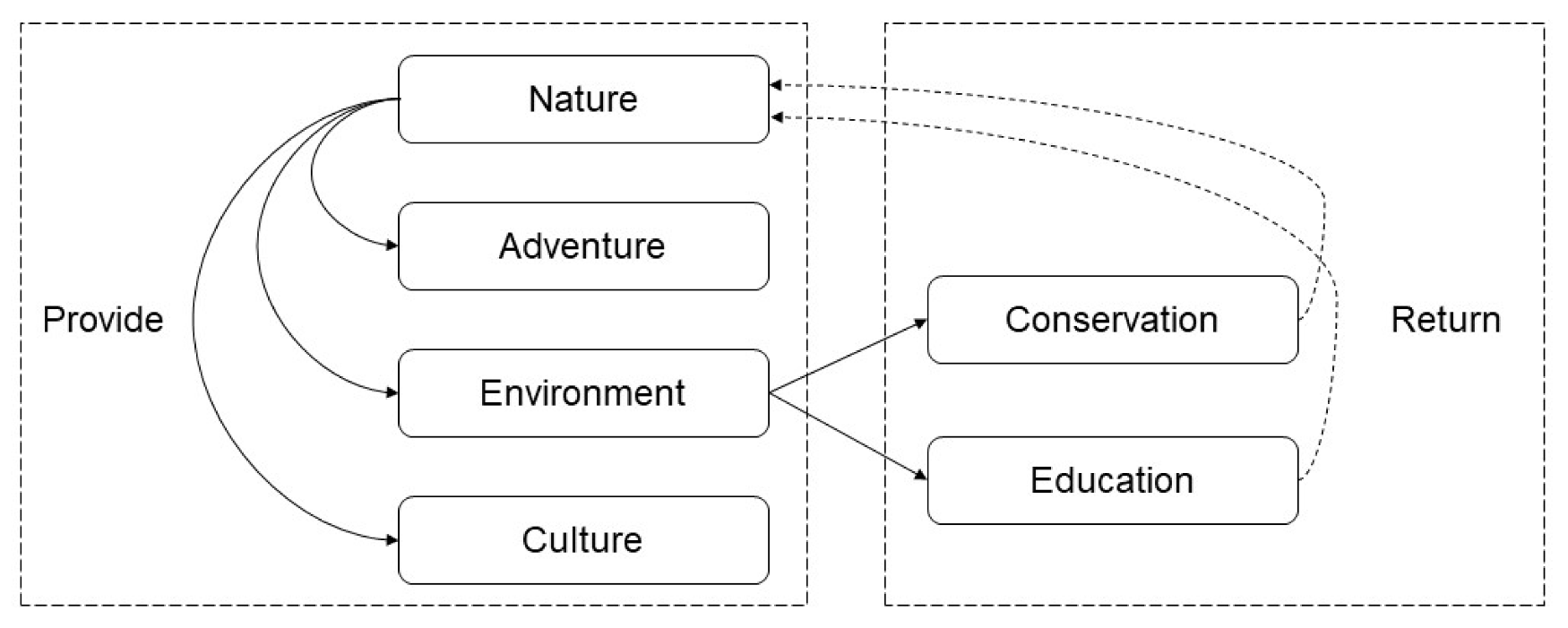2.1. Sense of Place
SoP is constructed from subjective and emotional people–place interactions [
2]. It consists of three elements: namely place attachment, place identity, and place dependence [
43]. Some scholars argue that place identity and place dependence are two elements of place attachment [
44]. Others describe SoP as the interaction between place meaning and place attachment [
45]. Regardless, SoP is how people assigned symbolic meanings (place meaning), emotional attachment (place identity), and functional attachment (place dependence) to a place based on their subjective and emotional interactions [
46]. The concept of SoP, which is linked to conceptions of place attachment, topophilia, insidedness, and community sentiment, is the foundational concept that describes human–place interaction [
47]. Therefore, SoP refers to bonds between people and places [
48]. From a social psychology perspective, this bond differs across physical, psychological, emotional, and experiential elements and should be studied separately [
49]. For example, the study of place attachment (the emotional element of SoP) would contribute to a deeper understanding of individual’s emotional attachment to place [
42].
SoP originates from long-term residence. Place attachment theory suggests that resident’s SoP is a success factor for destination branding and marketing [
50]. Target audiences will reject a destination brand that is not created based on the resident’s SoP [
14] because it will lack an authentic identity [
51]. As residents co-create stories according to their rooted appreciation of the destination-based values and meanings [
3], a destination brand that reflects changes in place meanings through resident’s stories will communicate a more compatible local image [
4]. Therefore, SoP is understood as a strong place identity uniquely produced by the residents in the destination branding literature [
3,
4,
5]. However, tourists also produce SoP. Yuksel, Yuksel, and Bilim [
52] emphasised tourist SoP as destination attachment with indications that the emotional meanings tourists attach to the places they visit influence satisfaction and loyalty. Qu, Dong, and Xiang [
53] concur and found destination attachment does initiate and perpetuate revisits by loyal tourists by considering SoP through destination attachment as a non-habitual place for tourist. Their study demonstrated the attachment-triggering effects of critical attributes that affected tourists’ revisit decision.
Selwyn [
54] asserts that tourist’s imagination constructs an image of a place. This image allows tourists to develop a SoP—meanings about a place even pre-travel [
36]. For example, the image of Borneo conveyed in early literature and tourist brochures has shaped modern tourists’ expectations about the island and its people [
28]. As meanings are formed within tourists’ knowledge, expectations, and imagination of a place, their SoP is developed depending on the level of exposure and interactions with the destination [
39]. Tourists may develop different levels of emotional attachment in different stages of the interaction with destination. Regardless, tourists are emotionally attached to a destination and its brand as they develop emotions, connection, and affection towards the destination based on how they value a destination [
17].
Two major dimensions used to describe a SoP are: (1) relationship to place, which refers to the various ways in which individuals are connected to places and the various sorts of bonds (genealogical/historical, narrative/cultural, economic, ideological, cosmological, and dynamic); and (2) the degree and forms of attachments to one location (place identification, place dependency, affective attachment, social bonding, place memory, and place expectation) are reflected in place attachment [
55,
56,
57].
SoP is a multi-dimensional construct. Each dimension addresses different aspect of SoP. Studies explore the relationship between the constructs but the main concern among researchers is how individuals are emotionally attached to a place [
42]. To fully operationalize SoP, Nelson et al. [
42] suggest an exploration of the constructs through factors. That is, geography, resources, community, and environment that affect the people–place bond as a way to measure how individuals value a place, why they depend on the place and what is the meaning of place to them on a symbolic level (p. 256). At present, destination brand development models are emphasising tourist-centred approaches but remain unsure which model could be considered effective in managing destination branding [
13]. Tourists’ SoP allows potential tourists to imagine a destination from the first-person perspective. As such, a destination branding model based on tourist’s SoP implies a strong destination image that triggers emotions and evokes emotional engagement between potential tourists and destinations [
18]. Therefore, it is timely to explore how tourists’ SoP contributes to the branding of destinations.
According to Jarratt, Phelan, Wain, and Dale [
58], tourists’ SoP features local distinctiveness. For example, Morecambe Bay of England is popular for its local history, natural environment, landscape, and experience such as beaches, wildlife or nature reserves. Whilst developing a SoP toolkit for Morecambe Bay tourists, Jarratt et al. [
58] captured emotional sentiments according to these local features and revealed four tourists’ SoP. These include wildlife and nature, landscape and views, culture and heritage, and food and drink. These aspects may not be applicable to tourists who visit other places. However, these unique buying points, if identified and communicated through emotional sentiments of the place, will become unique selling points which ultimately promote the localness of a place. Tourists’ SoP is uniquely formed within time and space. In the case of protected areas in Spain and Chile, tourists’ SoP and meaning is understood based on their experiences in nature-based tourism destinations [
59]. This SoP model may only be applicable for similar types of destinations.
Jarratt et al. [
58] emphasised that the fluid nature of places causes the dynamism of SoP and place brand. Although a few SoP models are developed from the perspectives of residents [
2,
3,
4], there is no fixed model that frames the components of tourists’ SoP. Though it can be guided by place-related themes, place specific facts, research and recommendation on visitor perceptions, branding guidelines, and potential networking information [
58], tourists’ SoP is uniquely constructed based on their subjective and emotional interaction with each place. This is why a unified tourists’ SoP model is not available in the literature. Tourists’ SoP differs across experiences and changes as experience changes. One way to capture tourists’ SoP is to reflect distinctive local features based on their emotional sentiments [
58]. McCreary et al. [
10] suggest the possibility to assess tourists’ SoP through UGC, which enables a more tourist-centred destination image. How tourists’ SoP are emotionally attached to a destination brand is of concern for scholars [
42]. Recent growth of UGC predisposes blogs as purveyors of SoP, which is presented in the next section.
2.2. Understanding Tourists’ Sense of Place through Blogs
Although a tourists’ SoP model cannot be unified, SoP is rooted in narratives [
20] and is deepened as tourists experience and recall the destinations through narratives [
60]. Tourists’ SoP can be explored through UGC projected in social media sites. McCreary et al. [
10] suggest that the destination images generated by users contains tourists’ SoP. For example, Feick and Robertson [
61] discovered differences in local and global urban place descriptors through measuring photo tags in Flickr. Similarly, McCreary et al. [
10] demonstrated how UGC provides meaningful social values useful for place-based management and branding in the North Shore of Minnesota. Social values are “collective attachment to place embodies meanings and values that are important to a community” [
62] (p. 22). From this perspective, the collective attachment to a destination can be understood as a dynamic concept that involves various stakeholder perspectives and changes across time and space [
63]. Meanings are co-constructed by all stakeholders including tourists. While DMOs lack control of how tourists construct place meanings, they capitalise on certain meanings and images perceived by tourists [
64]. Moreover, tourist destination image evolves with time and space [
65]. Constant evaluation of UGC not only refines destination marketing and promotion strategies, but it also improves relationships between DMOs and tourists [
13]. More importantly, UGC displays tourists’ subjective evaluation and emotional attachment to places [
23]. Some images, although not usually reflected by the DMOs, are topics of interest of tourists [
66] and the most authentic perceived by the others. Therefore, UGC is a useful tool for building and promoting destination image [
67].
Although research on the role of social media in destination marketing is growing, it evaluates online destination image (ODI) posted on Facebook, Twitter, YouTube, and TripAdvisor [
26]. Travel blogs display authentic reality that is not commercially manipulated and staged [
68]. Blogs are powerful storytelling sites in comparison to Facebook [
69]. Blogs contain the most personal evaluations of a tourist’s own experiences, wider range of emotions and richer descriptions of a place [
24]. Blogs are ranked the second most important source of destination choice and travel product (and service) consumptions after friends and family [
70]. It is a powerful electronic word-of-mouth (eWOM) and a source of organic ODI [
71]. Compared to average tourists, bloggers are experienced in travel and are more attached to a destination [
72]. Scholars have shed lights on how blogs shape tourist experiences, create meanings and tourist identity [
27,
73]. This includes the possibility for potential tourists to access tourists’ feelings, perceptions, and reflections through stories published in blogs [
25].
Bloggers reconstruct and idealise their travel stories by combining memories and emotional experiences, facts and stories about a place using different linguistic techniques, writing styles, descriptive and emotional words [
19]. Emotional experience is how a feeling towards a destination is shaped by an individual’s evaluation of the world [
16]. Through narratives, bloggers make sense of what they find different from their home culture and construct an imagination known as “rhetorics of othering”—an encounter with the exotic local people [
74]. Descriptive (to show differences) and emotional (to imply shock, surprise, or empathy) words are used to express their experiences [
19]. As bloggers reconstruct their memories into narratives, they are regenerating the life of their travel experience [
73] while extending their emotional experience to others. In other words, bloggers are not only assigning meanings and attachment to a destination, but also projecting their imagination and emotional experiences on others.
Blogger’s narratives, whether in the form of written text or visual media, frame the way others make sense of places [
75]. Bloggers incorporate lived experiences and knowledge and make sense of a destination by reinterpreting and retelling stories [
76]. Through this incorporation, blogger’s narratives take on new meanings for a destination and thus narratives are place-making tools [
77]. Values and meanings of travel experiences such as stories of risk and challenge, accounts of learning and reflection, accounts of novelty and difference, accounts of self-expansion, and stories of escape are embedded in narratives to allow access to a blogger’s emotional experience about a destination [
25]. For example, stories of risks taken (such as bungee jumping and skydiving) and challenges (including hardships and difficulties) that dominate blogger’s narratives [
19] will stimulate reader’s imagination and form an organic (unintended exposure to destination) or induced (intended search of destination information) image in the mind of readers. Blogs can generate consequences and risks that challenge the intended destination image [
71]. Narratives shared in the post-consumption stage are blogger’s perceived images known as complex image. Blogger’s complex image shapes potential tourists’ pre-visit image, that is, organic and induced images which affect their destination choice [
71]. Through destination image, blogs allow tourists to define these meanings of destination and share the meanings with readers. Through narratives, bloggers develop emotional attachment to destinations for their readers.










